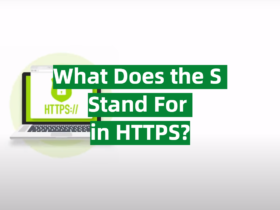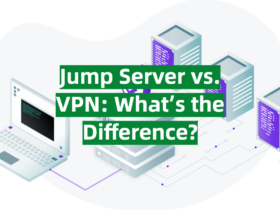The Internet is constantly changing. As many know, it’s the IP protocol that makes the entire web work, and right now, we’re in the midst of a major shift: IPv6 is replacing iPv4.
The IPv6 standard was completed back in 1998, so the change is hardly being made at a gallop. But do we really need to care? IPv4 or IPv6 – In which case, is it possible to access all websites regardless of which protocol we choose?
This is true, of course, but switching from IPv4 to IPv6 has some implications. And to predict what those are, we first need to examine the differences between the protocols.
IPv4 – Old But Stable
IPv4 may not be ancient, but it has actually been around since 1983, and surprisingly, many websites still use the same standard. IPv4 technology has always worked well and will continue to work well into the future, but there is one big problem: IPv4 addresses are running out.
An IP address is (very simplistically) a unique ID number that identifies our devices on the Web. Our phones have an IP number, and so do our desktops, our smartwatches, and our game consoles. In short, if the device you are using can connect to the Internet, you can tell the dog that it is assigned an IP number.
Specifically, two types of IP numbers are used when sending data over the Internet. An IP number of the sender and an identical number of the receiver. Only in this way can information be transported over the Web. Therefore, it is hardly an exaggeration to say that IP numbers are of great importance for the Web to function at all.
The biggest problem with IPv4 addresses is that they are “only” 32 bits, so the protocol is limited to about 4.3 billion (4,294,967,296) unique numbers. And that means we have 4.3 billion IPv4 numbers to choose from – how on earth can they run out anytime soon?
Unfortunately, it is our own negligence that has put sticks in our wheel. In the 1980s, we sent millions of IP numbers to large companies that needed only a fraction of them. There are still hundreds of millions of unused IPv4 addresses lying around everywhere – which can be called a huge waste. Fortunately, many large enterprises are returning their unused IPv4 addresses, but not fast enough for the number of available addresses to be sufficient in the long run. A new standard is needed – and that’s where IPv6 comes in.
IPv6 is the Future – and is Available Today
IPv6 is as big a step as sliced bread – but for the Internet, that is. As mentioned earlier, the IPv6 standard has been in clubs and finalized for over 20 years. 128-bit variants have now replaced the “fluffy” 32-bit keys, and instead of about 4.3 billion possible IP numbers, it’s now about 340.3, 60 million possible. To put everything in perspective, I present the figure in plain text: 340 282 366 920 938 463 463 374 607 431 768 211 456 addresses can be created with IPv6.
However, the advantages of IPv6 technology do not end here. With the same technology, all devices can have their own IP address, which is also unique. This is not the case with the IPv4 standard. Today, only our routers are assigned unique IP addresses. All units that join them can join non-unique units. To illustrate everything: When an iPhone is connected to a router, it is always the router that ensures that all data ends up in the right place.
This maneuver is done via the so-called Network Address Translation or NAT technology, which is described as efficient and secure. But even here we find a number of disadvantages. NAT technology requires resources (ridiculously small – but resources at the same time) to function properly. In addition, NAT technology does not support all security protocols like IPSec.
Thanks to IPv6, we can throw NAT technology into the next bin. Using unique IP addresses for all connected devices in the future, and at the same time, security mode gets a push in the right direction.
Speed Increases are Expected With the New Technology
According to some sources, the new protocol should be more efficient than IPv4. Better support should be available for file sharing via the peer-to-peer protocol (P2P), among other things. It should also be possible to speed up many of the redirects that take place on the Web. According to Securi, the speed increase is about 5 to 10 percent. But right here, when it comes to speed mode, there are as many views as there are unique IPv6 numbers. Some even believe that the speed situation will worsen.
Regardless of whether IPv6 is faster than IPv4 or not, IPv6 still wins. And the speed we get with IPv6 technology will continue to improve in the future. So be sure.
How Many Users are Currently Using IPv6?
Despite the fact that IPv6 technology has been around for a long time, only just under 50 countries (the USA is one of them) use this technology. Less than 5% of all Internet traffic takes place over IPv6. However, the popularity of IPv6 is growing with each passing year, not least because many want to connect their smart home devices more efficiently. You might then ask: Why is the change taking so long?
The shortest and simplest answer is that IPv6 technology is too expensive, and according to Excentis, there are five other reasons why IPv4 still dominates.
- NAT technology isn’t perfect – but it’s cheap and secure enough for most people
- IPv6 technology can’t communicate well with IPv4
- Operating costs are high, and speed gains are too small (at least for now)
- Many are uninterested and don’t care: i.e., if it’s not broken – why fix it?
According to Google statistics, IPv6 traffic is steadily increasing, but it is slow.
As you can see, a lot has happened since 2013. Almost all newly manufactured routers offer support for IPv6 technology, and both Internet operators and larger technology companies have started to jump on the IPv6 bandwagon.
Should You Use IPv6 Technology?
After knowing the benefits of IPv6 technology, you need to ask yourself the question you can read in the headline. And yes, you should use IPv6. As more people adapt to the new protocol, it becomes more likely that technology vendors, Internet operators, and software vendors will integrate IPv6 support into their products.
However, before you change settings and other bugs, you need to keep up wondering if you’re already using IPv6 technology. To be able to verify this: Go here and see what this tool says.
As you can see, there will be no IPv6 surfing for me, but do nothing. The IPv6 protocol can be enabled in a snap.
How to Enable IPv6 Technology?
If your Internet operators and router manufacturers work nice with IPv6 technology, this should be a green light. A good tip can be to search for “your router model” + “internet operator” + “IPv6” (e.g., Asus RT-ac87u Telia IPv6). Another good tip can be to update the router’s software to, for example, DD-WRT or Tomato. There, the IPv6 protocol is fully supported.
Besides, a compromise is available in the form of 6to4 routing. If you choose this route, all IPv6 traffic is transported using IPv4 technology. You can then take advantage of many of the benefits of the IPv6 protocol, even if you are using the slightly older protocol.
However, it is best to use an IPv6-only connection. This way, you avoid various transcodes and other compromises and can connect directly to IPv6 websites instead.
Which Websites Support IPv6 Connections?
There is a very flexible service that responds to just that: Website IPv6 Validator.
IPv6 and VPN Technology
Not all VPN providers handle IPv6. In these cases, we should disable the same technology completely.
Disable the IPv6 Wizard for Windows
Here’s how the procedure works:
- Step 1: Go to “Control Panel” and select “Network and Internet”
- Step 2: Select “Network and Sharing Center”
- Step 3: Click on your Internet connection
- Step 3: Select “Properties”
- Step 4: Uncheck “Internet Protocol Version 6” and select “OK”
Now you have instructed that Windows can and will never use IPv6.
Disable IPv6 Wizard for Mac
Go to Preferences -> Network -> Advanced and click on the TCP / IP tab. Then change the status of “Configure IPv6” to “Off”. You can also use the command prompt to perform the exact same maneuver:
"Networksetup -setv6off" – Disables IPv6 when you are connected to WiFi.
"Networksetup -setv6off" – Disables IPv6 when you are connected to a wired connection.
IPv6 and VPN Connections
Many VPN providers say that IPv6 technology is too insecure, but should we really believe it? The truth may be that they don’t want to update their software and servers to support the protocol.
If you browse over the IPv6 protocol and the VPN company in question doesn’t support the new standard, all your Internet traffic will be transported through your ISPs instead of the closed VPN tunnel you pay for. This phenomenon is known as IPv6 leak.
Unfortunately, these types of leaks are quite common. Especially when it comes to Android, which Hackernoon was the first to report on. But not everything is entirely for the woods. Some VPN companies handle IPv6 conversion very well, which we will explain in the next section.
Which VPN Providers Offer Good Support for IPv6?
As mentioned earlier, it’s far from all VPN providers that support the new connection technology well. But some, such as FrootVPN, Perfect Privacy, OVPN, and NordVPN, certainly use IPv6.
All of the above VPN services offer tools to ensure that all IPv6 traffic is tunneled through their in-house servers, and they work just fine.
If you are not sure how these tools work or how they are enabled, contact the VPN company’s support department. They will be able to help you out. And if you don’t want or can’t read what applies – stick with IPv4. It’s worth saying again: if you’re browsing over IPv6 and your VPN providers don’t support it, your VPN connections are completely useless.
Should IPv6 be Enabled when VPN is Working?
As a rule of thumb; No. Since many VPN services do not effectively protect us from IPv6 leaks, the same protocol should be disabled. However, if you know what you are doing, you can enable IPv6. But then you need to be 100% sure that the VPN provider you are using can protect you from IPv6 leaks.
Conclusion
Computers do not experience major complications when transitioning to IPv6. IPv6 is integrated into Windows Vista and later, and Mac OS Panther (10.3) and later. However, there may be problems with standalone network products such as web radios and media players. Fortunately, most IPv6-classified routers can use IPv6 and IPv4 simultaneously, allowing addresses of both versions to be assigned to any connected network device. In this way, the router can continue to use IPv4 addresses on the local network but use an IPV6 address when communicating with the Internet.









Leave a Reply